As smart and seamless as note-taking can get – with Popt
Tired of complex note-taking apps? Discover Popt, a smart, simple iOS app that auto-tags contacts, places, and dates, making notes fast, fun, and effortless. Read on and learn more about it.
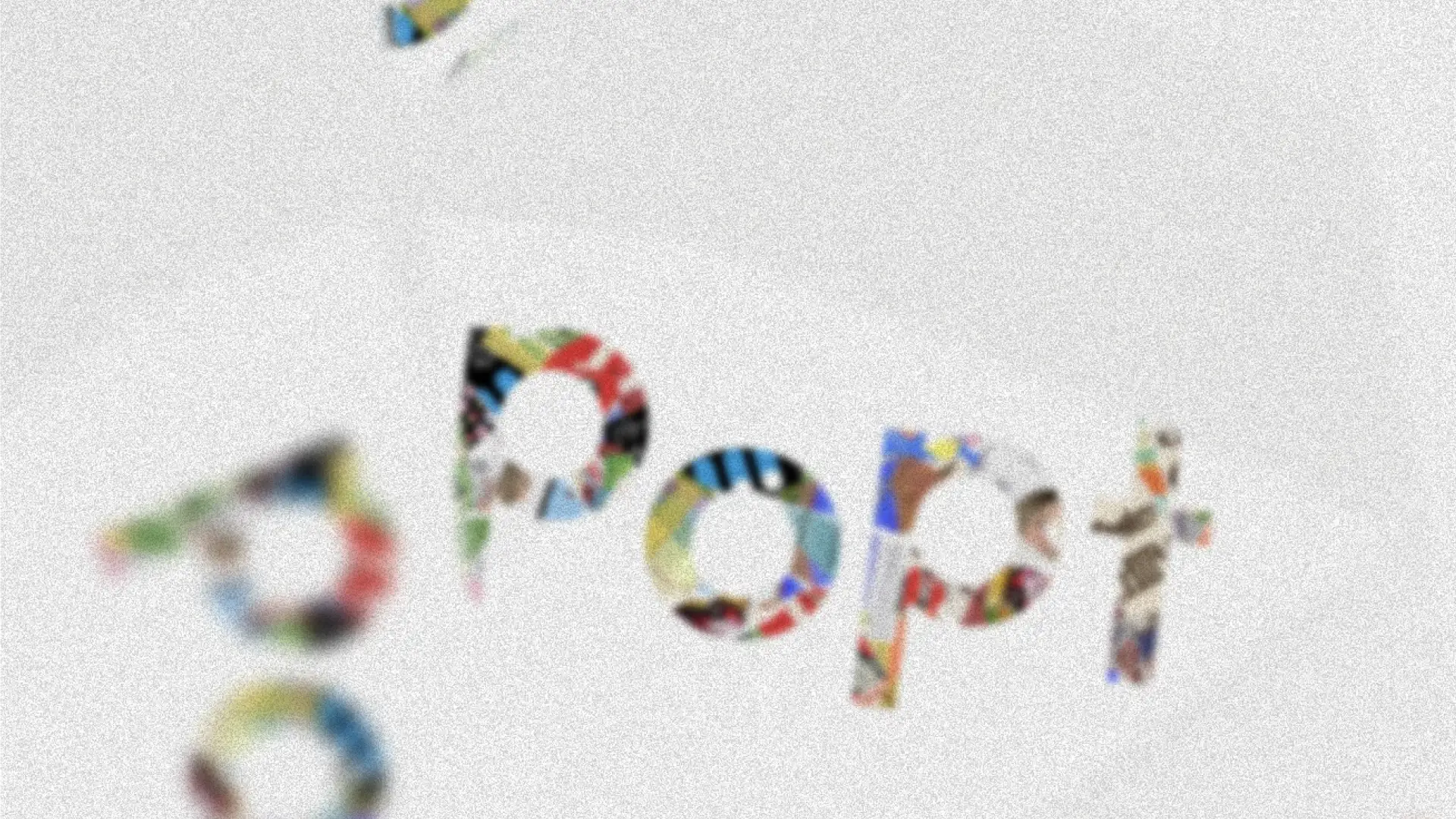
During the peak of the pandemic, we got swamped with new note-taking apps. It almost feels like as if every single month there was a new app preaching to change your life and turn you into the most creative and productive person. At the same time we saw the rise of productivity gurus and influencers pushing all those note-taking apps, as well as courses which were teaching complex and unnecessary systems, which sounded interesting in theory, but simply led to procrastination, as people spend hours, days, weeks, perfecting their systems instead of focusing on the real reason someone invests in a note-taking app, which is, well simply taking notes.
Loads of those apps no longer exist. Most of those productivity gurus have jumped on the next hype-train. And people have realized that they do not need systems to be more creative, and instead just have a solid piece of software and focus on the actual writing and note-taking part.
You should not have to worry about creating a bunch of backlinks, connections, numerous folders in order to get the most out of your note-taking practice. Note-taking should simple, plain, fast, smart, seamless, and fun. And with this post, I am excited to introduce you to a fresh new app that ticks all those boxes. Let us dive into Popt.
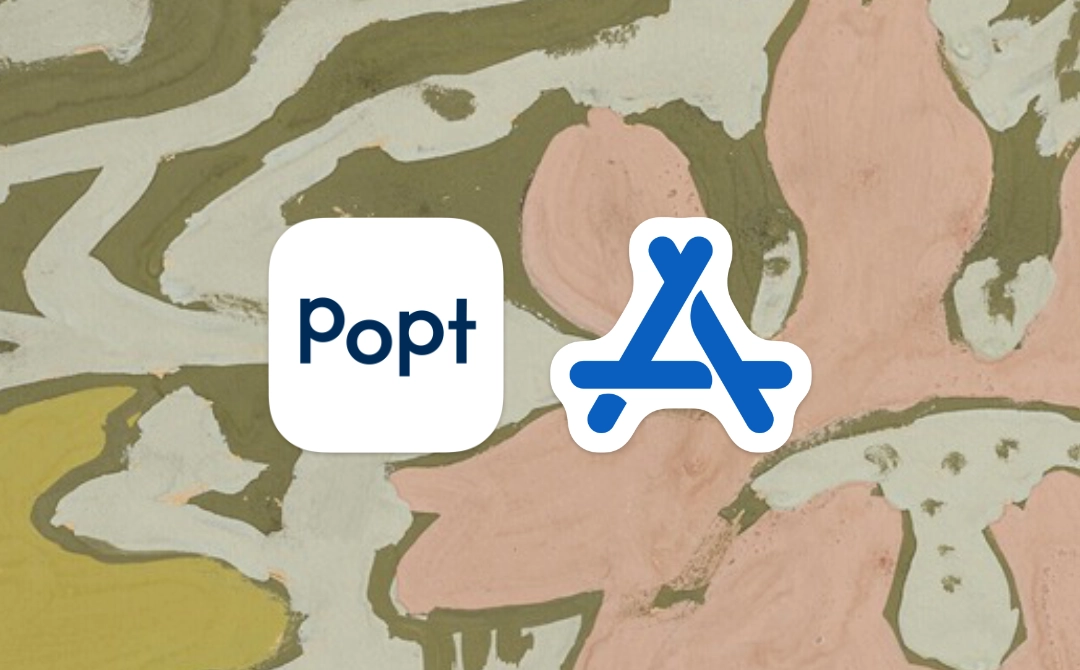
What is Popt?
Popt is mobile notes app available for iOS, that provides you with smart and seamless note-taking. With Popt you get access to smarter notes, as it quietly suggests tags for dates, places, and contacts while you are typing your notes. This means your notes stay plan and fast, however, you can pop them to life thanks to beautiful designed contact cards, timelines, maps, and more. If you find yourself dumping everything constantly into the default notes app on your iPhone although there are countless apps to manage todos, shopping lists, recipes, and more, you should take a look at Popt, as it provideds the simplicity of a standard note-taking app, but thanks to its smart features, Popt takes the experience of capturing all those things onto another level. The app detects and links contacts, places, and dates as you type, turning plain text into a dynamic, interconnected web of information.
The experience of note-taking should be seamless, and not distracting. Whether you’re jotting down a quick to-do, planning a trip, or keeping track of shared tasks, Popt keeps your notes organized and accessible.
What are Popt tags, how to use them, and why they are the smarter, simpler approach
When it comes to traditional note-taking, most of the time you are forced to decide where a note belongs, often leading to rigid, siloed information. Folders became the number one way to house those siloed information. When a note could fit into multiple folders though, users had to choose one or duplicate the note, which created clutter and inefficiency. So, the solution to that should be breaking the limitation by allowing a single note to belong to multiple categories simultaneously by using tags. Folders were out, tags were in. The idea of using tags while taking notes got heavily influenced by hyped knowledge management systems like Zettelkasten or PARA, as they emphasized the idea of linking your notes rather than just storing them, and tags suddenly became a natural fit for those methodologies.
So, tags are offering flexibility, and they allow users to retrieve notes by context (e.g. a project, a person, a topic) rather than by location (e.g. a folder). It kind of became common sense that this way mirrors how memory works, as we recall information based on associations, not file paths, and therefore, tags became the best way to organize notes (but still, if you do not use tags but folders instead and it just works for you, there is no need to change something). Additionally, tags scale better because they do not require hierarchical planning, you can just add or modify tags as your needs evolve.
BUT ...
... The more tags you create, the harder it becomes to maintain consistency. Back when I was heavily relying on tags, I often ended up with duplicated, misspelled, or overly specific tags, which ultimately defeated the purpose of the initial idea of organization. It needs discipline to stick to a tagging system, since if you do not follow it, it can became as chaotic as the folders they meant to replace. Constantly deciding which tags to apply to your notes lead to cognitive overhead, as it interrupts the flow of note-taking, especially when you are trying to capture ideas quickly. The need to "tag correctly" can feel like a burden, leading to procrastination or avoidance. And ultimately, most tagging systems treat tags as static labels, not as dynamic links to real-world entities.
Popt’s tagging system transforms tags into active connections, not just labels, but direct links to contacts, places, and dates. This turns notes into a network of meaningful relationships, not just a list of keywords. For example, once if give Popt access to your contacts, mentioning a contact's name in a note automatically suggests to linking to their contact card, as well as a place tag opens a map. This makes notes actionable and context-rich without extra effort. With Popt, there is no longer the need to manually assign tags (although that is still possible, let us take a look at that a bit later) since the app smartly suggests those tags and gives you a visual cue to add them to your notes while typing. This reduces cognitive load and keeps your note-taking process simple, fluid, and smart.
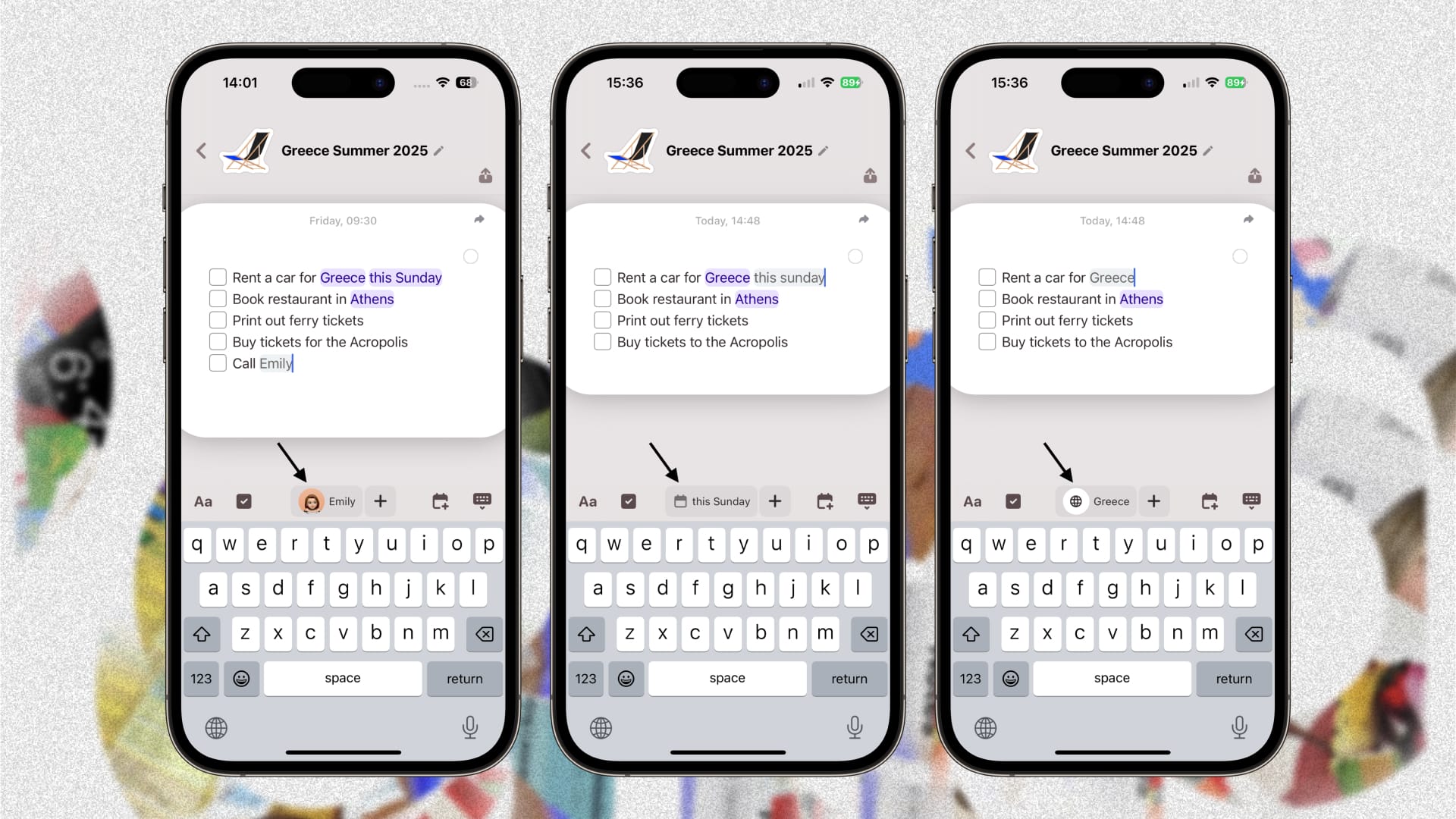
Tagging revolutionized note-taking by making organization flexible and associative. However, traditional tagging systems often introduce new complexities, maintenance, overload, and cognitive friction. Popt addresses these flaws by turning tags into dynamic, context-aware links that require no extra effort to maintain.
By focusing on real-world connections (people, places, dates) rather than abstract labels, Popt makes note-taking feel more natural and powerful. It is a step toward a future where notes are not just stored, they are actively connected to the world around us.
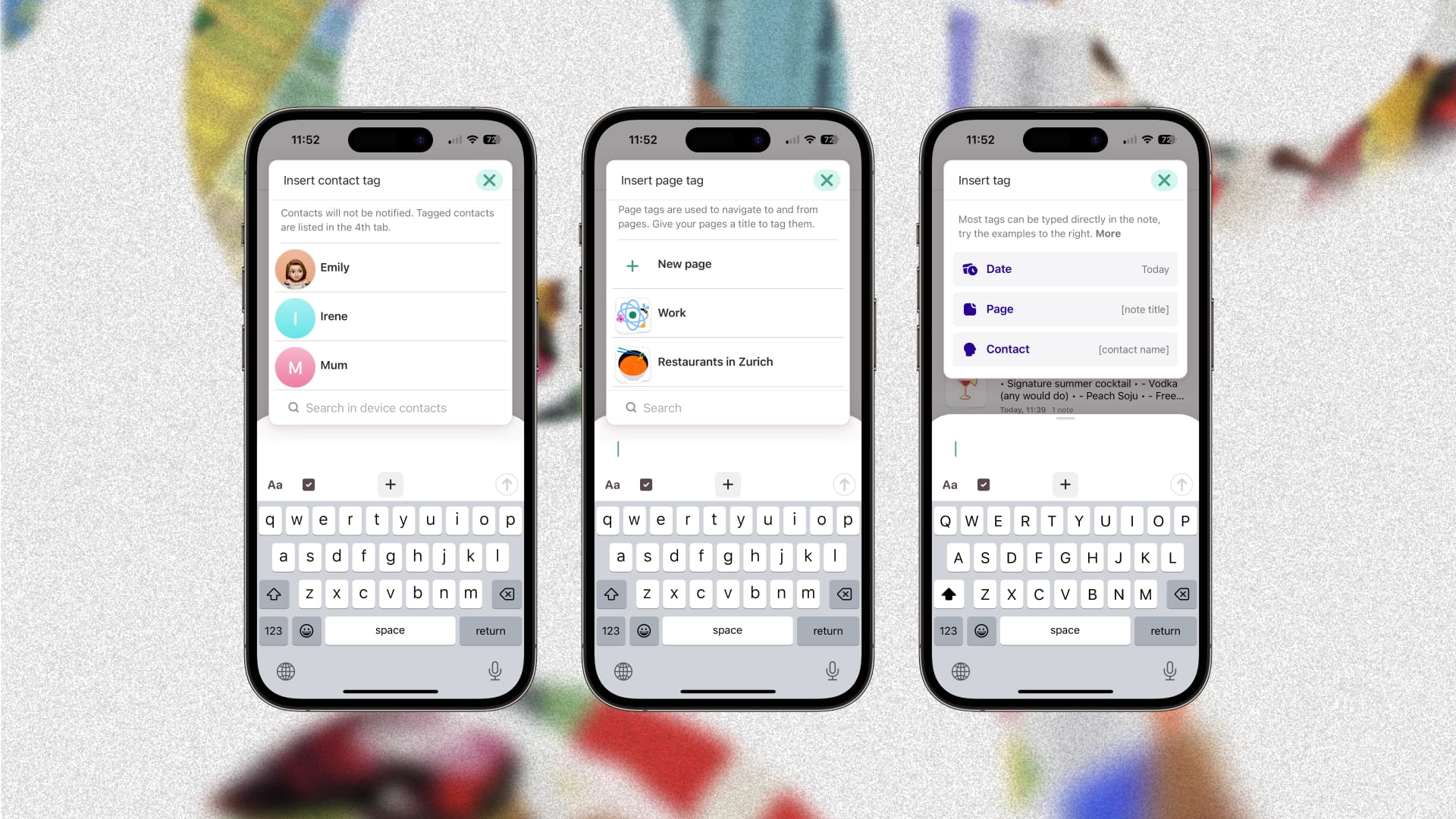
I have been using Capacities for a while now as my preferred note-taking environment. In case you do not know what Capacities is, here is a quick intro: it is a note-taking app that follows a so-called object-based approach when it comes to note-taking. This means you can create object types like "Person", "Book", "Article", "Place", etc. and while you are taking notes you can then capture new pages which are assigned to those objects. For example, I have an "App" object which I use to capture apps. As I discovered Popt, I created a new page called "Popt" and turned it into an "App" object, which then gives me certain properties like "Link", "Operating System", "Creators", which I initially created, to add more context to the note. It kind of feels like creating pages with specific tags which then give those pages additional context. However, all of this happens manually. I have to manually set up the objects, manually add the properties I need, which means at a later stage I might need to edit those properties, and when journaling, I have to manually add new pages by using an input like "/app/Popt" which creates a new page with the "App" object already assigned.
While this workflow works for me as I am sitting in front of my Mac, it feels incredibly clunky when I am using my iPhone. I would not call it being able to quickly capture something, which to me is the purpose of taking notes on my iPhone. Popt feels way smarter in that sense, since I do not have to worry to pull up the right page, the right object, search for a folder, or a place where I need to put the note, nope, I just open up Popt, tap into the input field on the bottom of the screen and start typing. And the beauty here is that I actually just need to start writing, as Popt automatically suggest tags for contacts, places, and URLs. And I am sure that the team has more "objects" already on their roadmap.
Prioritizing speed, simplicity, and joy
What I truly love about Popt is that you immediately feel that it has been built and optimized for speed, simplicity, and joy. It leverages a modern and intuitive interface that feels familiar from the first tap. Creating your first note is super fast as you can simply start typing with a single tap. The default tab in Popt is the so-called "Notes" view, where all the notes you create are neatly organized within a list view. You can quickly tap on a note from the list to open up its page, or use the bottom sheet component, which acts as an input field to create a new note, as well as searching for existing ones.
And all of those interactions are happening super smooth and fast, which is crucial if you are using a note-taking app on your iPhone and looking to capture thoughts, ideas, questions, and notes in the blink they came to your mind.
But besides that, note-taking should also be fun and bring joy. Popt delivered on that aspect too, as it offers playful stickers to make your notes and pages visually engaging.
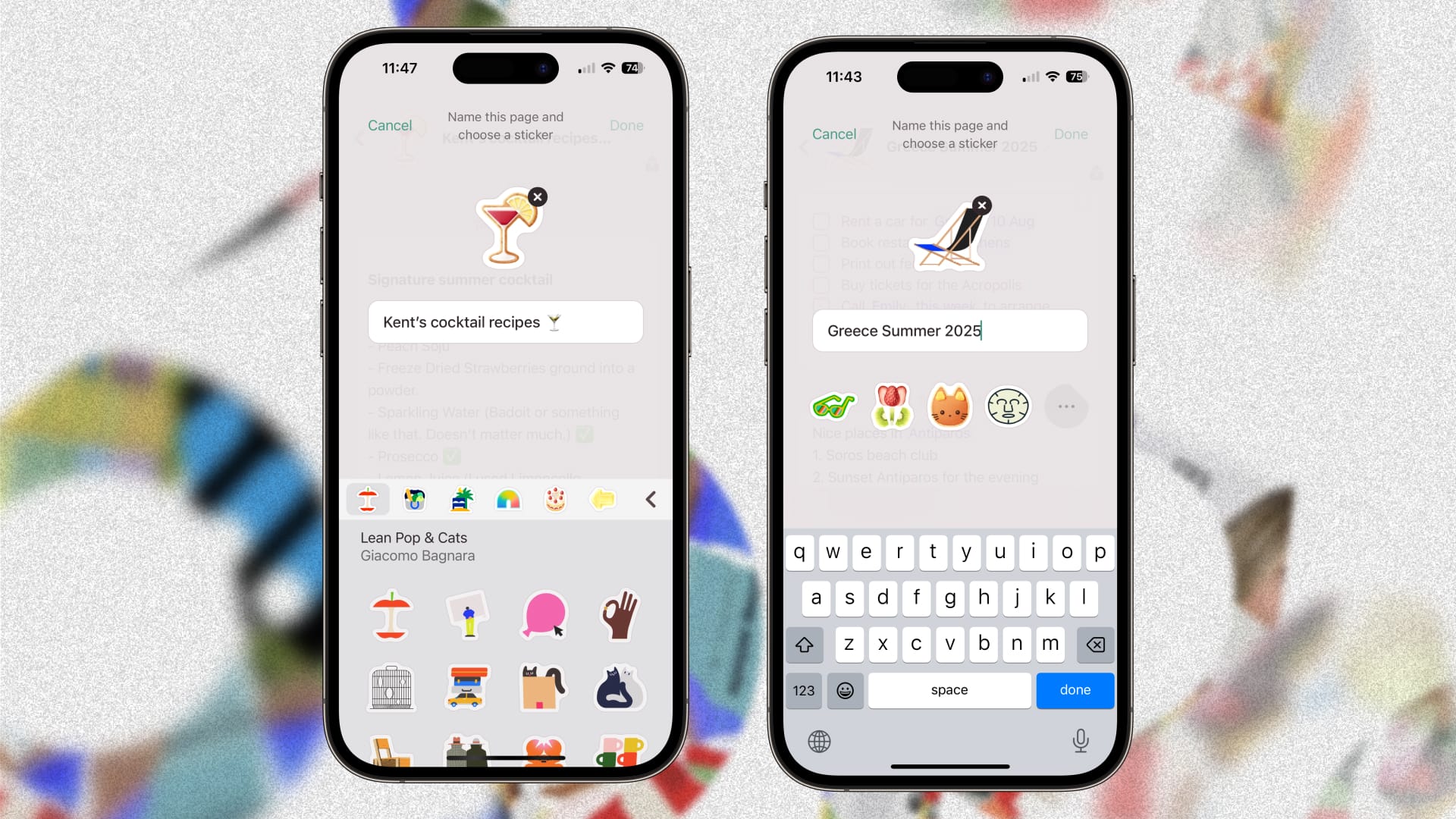
Notes, pages, todos, and dates
You heard me talking about notes and pages, and I feel like, there is the need for a quick section about how those two content types work together in Popt. Whenever you create a note from the input field on the "Notes" tab, you are creating, well, a note. However, at the same time a somewhat "anonymous" page of which the note is a part of, also gets created. This means, tapping onto the note, opens up a page, where all notes that have been added to that page are gathered. You can then go ahead an give the page a title and add a playful sticker to it. Additionally, you can obviously edit the notes that have already been added or add even more new notes to the page. You can see how the placeholder text of the bottom sheet input field changes once you have tapped on a note or a page from the "Notes" tap, as it then says "New note in page", indicating that the note you are about to create will get added to the page you are viewing at the moment.
In case you want to create a dedicated page right away, you can achieve that by creating multi-line content in the input text field, since then Popt transitions into page draft mode, and you can directly add a page title as well as a sticker.
To format your notes, Popt provides you with a limited but totally sufficient set of formatting options like text, header, todo, bullet list, and numbered list. To capture a todo, you even have a quick action above your keyboard which creates a checkbox instantly after tapping on it. So yeah, you can also jot down your todos with Popt, and what I love about the workflow here is that it is also smart as seamless. Jotting down a todo works the same as creating a new note. This means, once you have created a todo, you also created a note, and an anonymous page, so this lives within your "Notes" page now. However, since there is a dedicated "To-dos" tab in Popt too, it automatically gathers all notes that include a todo in a single view, without the need to manually manage or organize anything, they are just there. By default, all todos will land in your Inbox. In case you want to actually add another layer of structure and organization you can do so too, by simply creating a page, and then add notes with headers and todos to that page, as then the pages will pop up in your "To-dos" tab too. Lovely.
You can also add Popt tags to todos, as well as dates in order to add a time or date context to the todo, and by doing that you can even set reminders.
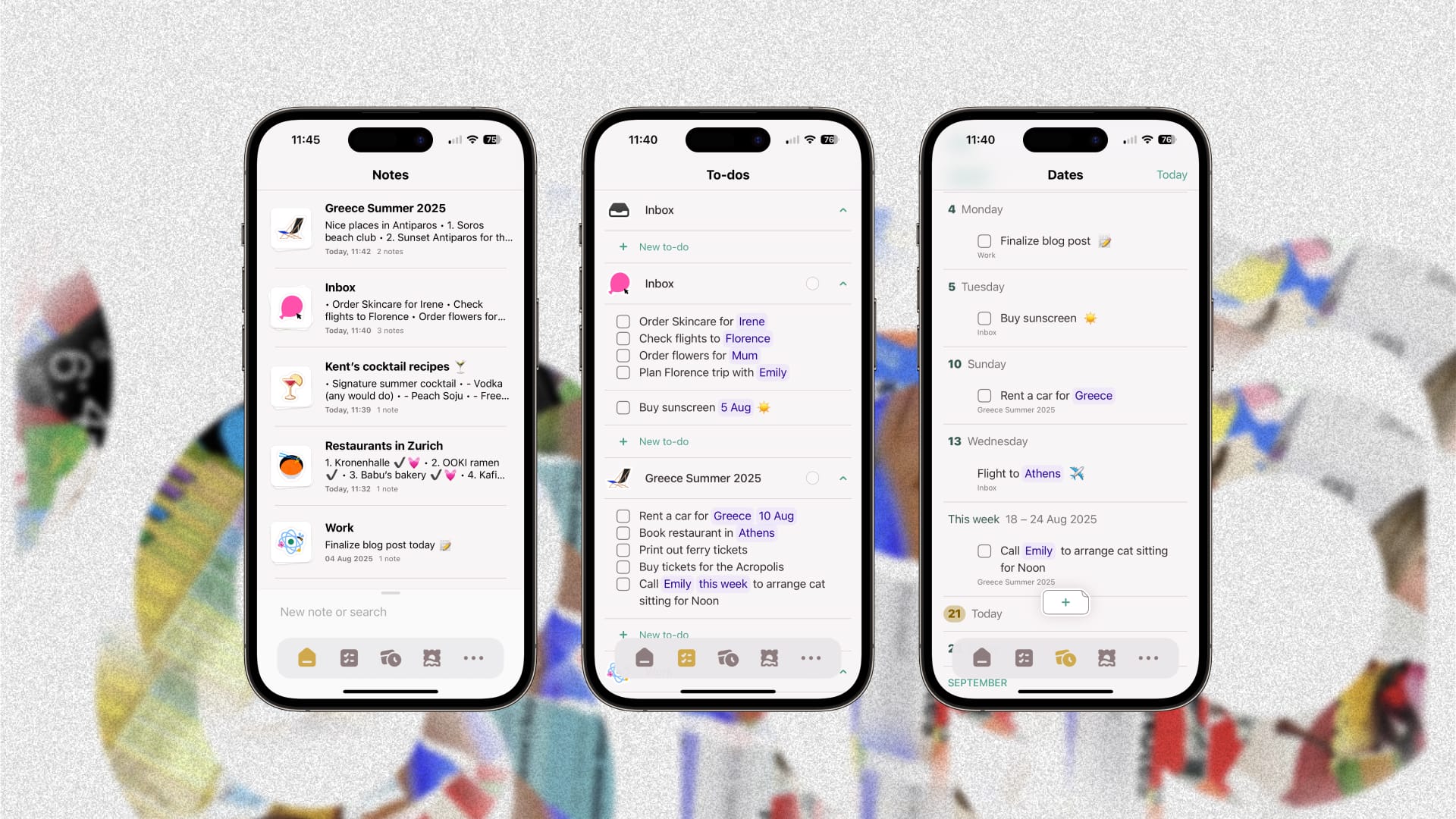
Speaking of dates, there is another tab within Popt which is called "Dates" and displays a timeline of your notes which have a specific date added to them. So, you can use that in order to journal or again, set up reminders as it also lets you add notes to dates that are in the future.
All of this feels incredibly smooth, simple, and streamlined. There is no complexity. Everything feels intuitive, and the features work how you would expect them to work. Let us take a look at what might be my favorite feature of Popt, rich content cards.
If you are not able to support my work financially, I appreciate it deeply if you could share this post with your friends and family, and simply spread the word.
Thank you ❤️
Rich content cards
As I already shared with you, Popt tags are a smart and seamless way to create direct links to contacts, places, dates, and more. While this is already exciting and intuitive, the way Popt is visualizing contacts and places is what stands out for me.
If you gave Popt access to your contacts, it will suggest tagging them while you are writing out their name. Once you created a tag for a contact, it will appear on the "Contacts" page with its name and profile pic. Tapping on that reveals a card where you can see all the notes in which you have tagged this specific contact. Additionally, you can quickly open up the contact card of the contact. The same works for places, well, not all places, but while using it I was able to automatically tag some major cities across different countries. As of writing this, Popt is using a database of about 35.000 places, while the master database is significantly larger than that, however, the in order to keep the app reasonable sized, there needs to be some filtering, as well as Popt will not suggest tiny villages when you type out their names. But as Popt will improve over this functionality, you will soon be able to search for any city or village, as the team plans to not only have places but rather point of interests as smart tags within the app.
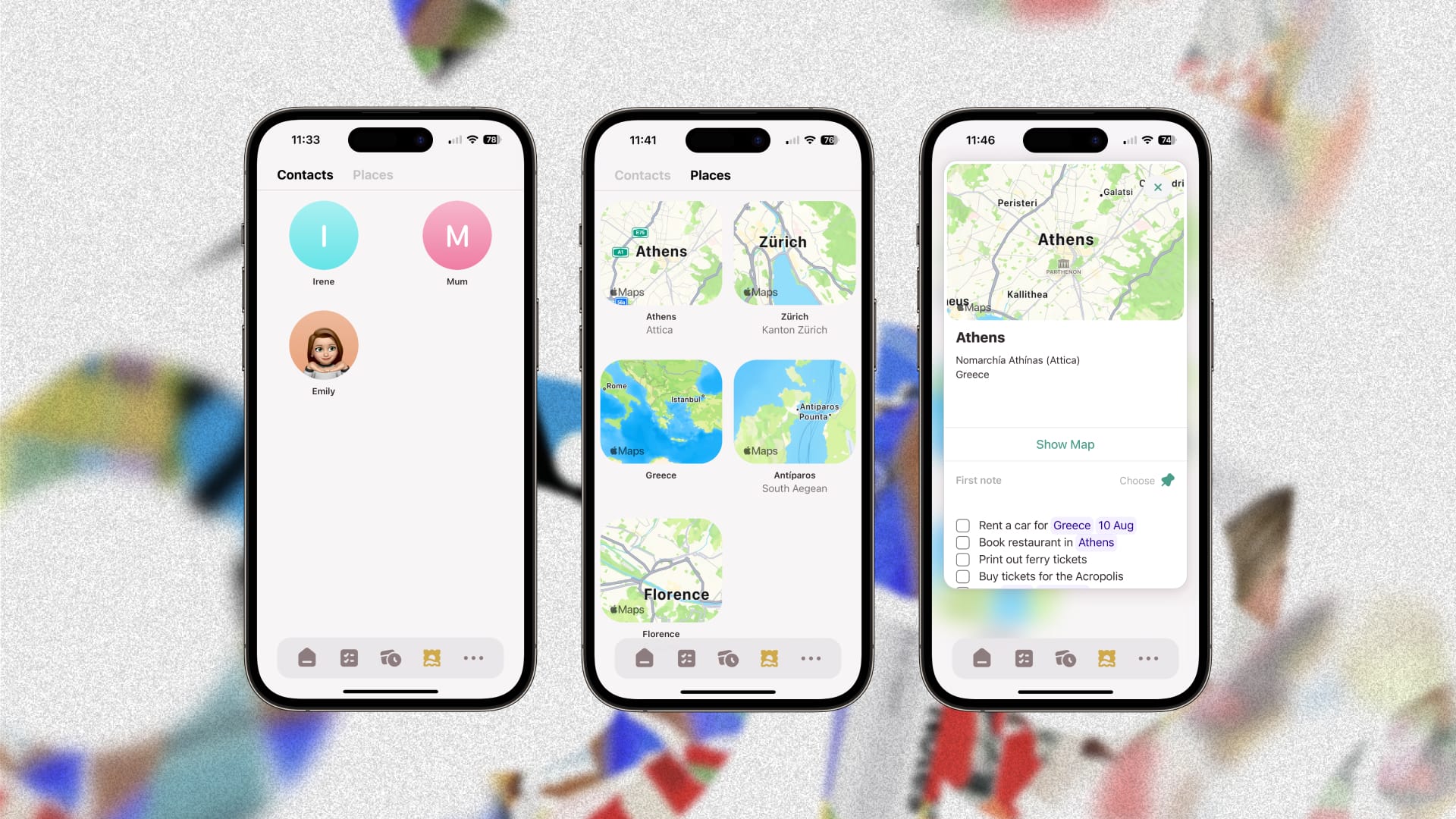
Privacy and accessibility
I am a fan of apps that are respecting its users' privacy in general, but with note-taking apps, I am even more sensitive to that topic, since in a most cases, users will put in personal and private notes into a note-taking app, and those notes are not any kind of business for anyone besides the person who created them. Therefore, I am excited to inform you that Popt is an offline app. This means that your Popt database, and all your notes are protected by standard iOS security.
Besides that, you can backup all your notes by using the "Export all" option in the app's "Backstage" tab. This will create a .zip archive of your notes, which is also in an Obsidian compatible export, so in case you want to, you can unzip and browse it like an Obsidian vault. Your Popt tags will get converted to Obsidian flavoured internal links. This is a huge thing, since note-taking apps should never lock you in, and instead provide you with the options to export your notes, and take them with you in case you are switching apps. This makes an app way more accessible, since you do not have to worry about starting from zero once you make the switch, and leave your notes behind.
Who is Popt for?
Now, in general, I am not a fan of labeling a note-taking app just to a specific group of people since that often feels like gatekeeping. I do understand the fact that some people will get frustrated by apps like Obsidian or Capacities since they feel complex at first, and it needs some time, work, and consistency to get the hang of it, which is not everyone's favorite thing to do when it comes to note-taking. What I deeply appreciate about Popt is everyone can use and enjoy it. You do not have to be a Knowledge Worker with a PhD to be the target group and make sense of all the bloated features.
No matter if you are looking for a super simple note-taking app to keep track of your tasks, events, and maybe even projects without the hassle of folders, or if you like to have a cozy and fun space to organize itineraries, and local tips by location, or if you want to link notes to contacts, dates, and places for context-rich organization, or if you are simply frustrated with traditional note-taking apps, Popt is offering a great alternative with a simple and seamless experience, and a lovely tagging system which feels incredibly refreshing.
Conclusion
The past few years have been a whirlwind of productivity hype. Endless apps, complex systems, and the pressure to "optimize" every aspect of our digital lives. But here is the truth: note-taking is not about the system. It is about the doing. It’s about capturing ideas, plans, and memories without friction, without overthinking, and without getting lost in the mechanics of organization. Most of us don’t need another framework or a guru’s blessing to take notes. We just need a tool that gets out of the way and lets us focus on what matters: the thoughts, tasks, and moments we want to preserve.
Popt is that tool.
It is refreshing to use an app that understands this. Popt does not ask you to learn a new methodology, build a web of backlinks, or maintain a meticulous tagging system. Instead, it works with you, not against you. It takes the simplicity of a default notes app and elevates it with smart, context-aware features that feel like magic, tags that link to real people, places, and dates; a seamless interface that is fast and intuitive; and a design that is as playful as it is powerful. Whether you are jotting down a quick to-do, planning a trip, or journaling your day, Popt makes the process feel natural, even joyful.
What sets Popt apart is its commitment to simplicity without sacrificing intelligence. It is smart enough to suggest tags as you type, turning plain text into a dynamic network of connected information without requiring you to lift a finger. It is flexible enough to adapt to your workflow, whether you are a minimalist who just wants a clean list of notes or someone who loves organizing with pages, stickers, and timelines. And it is respectful of your time and privacy, with offline storage and easy export options that ensure your notes are always yours.
In a world where note-taking apps often feel like they are designed for productivity theorists rather than real people, Popt is a breath of fresh air. It is built for anyone who’s ever felt overwhelmed by folders, frustrated by rigid systems, or just wanted a faster, smarter way to capture their thoughts. It is for the person who dumps everything into Apple Notes but wishes it could do more.
Most importantly, Popt reminds us that note-taking should be simple, fast, and even fun. It is not about building a second brain or mastering a complex system. it is about having a reliable, delightful place to put your thoughts, so you can get back to living, creating, and doing.
If you have ever felt bogged down by the complexity of other note-taking apps, give Popt a try. It might just be the last notes app you will ever need, not because it does everything, but because it does exactly what you need, exactly how you need it.
Note-taking, finally simplified. Try Popt today and rediscover the joy of just writing things down.
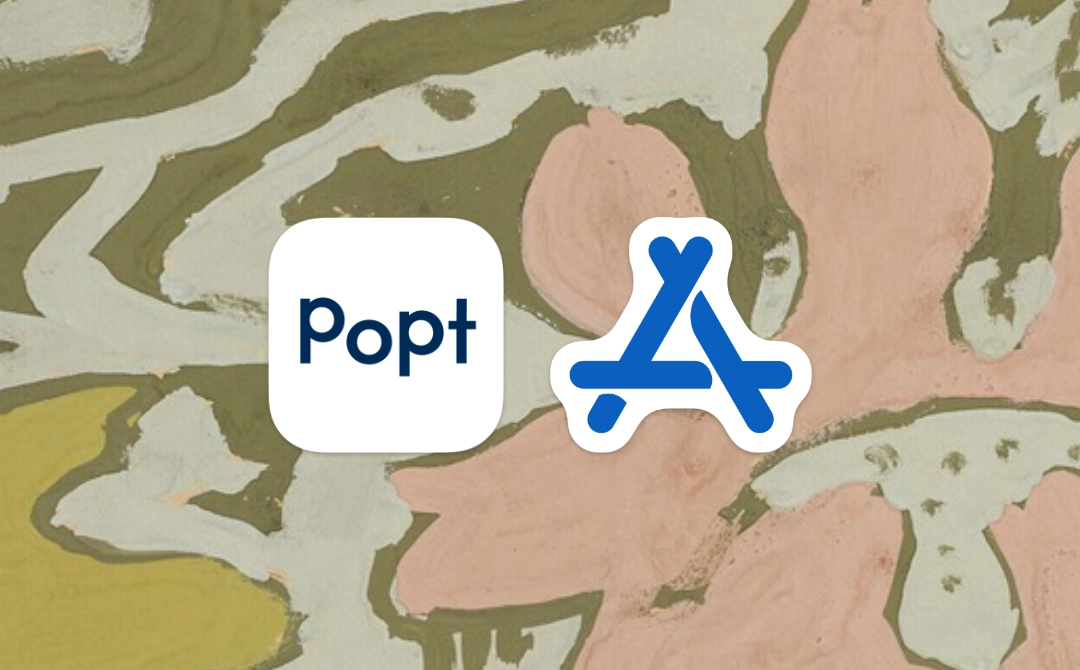
Till next time! 👋
Support: Do you have a friend who is looking for inspiration, news about design, and useful tools and apps? Forward this newsletter to a friend or simply share this issue and show some support. You can also show some love by simply clicking the button down below and keep this newsletter a sustainable side-project by buying me a coffee. ☕️ 🥰






Discussion